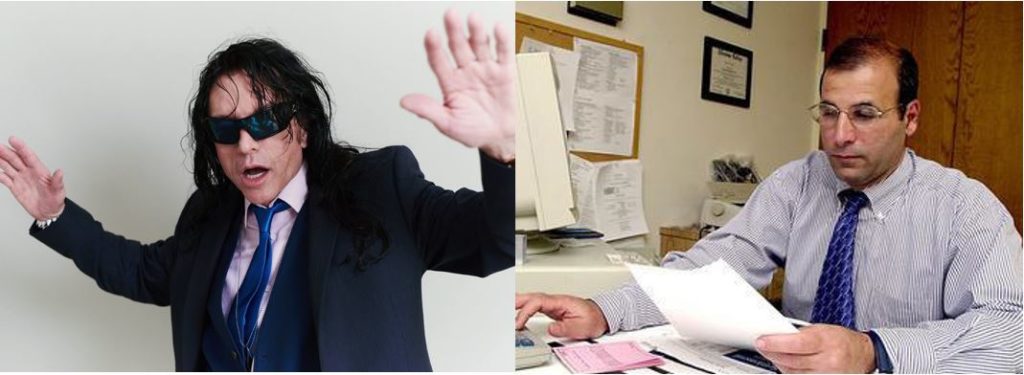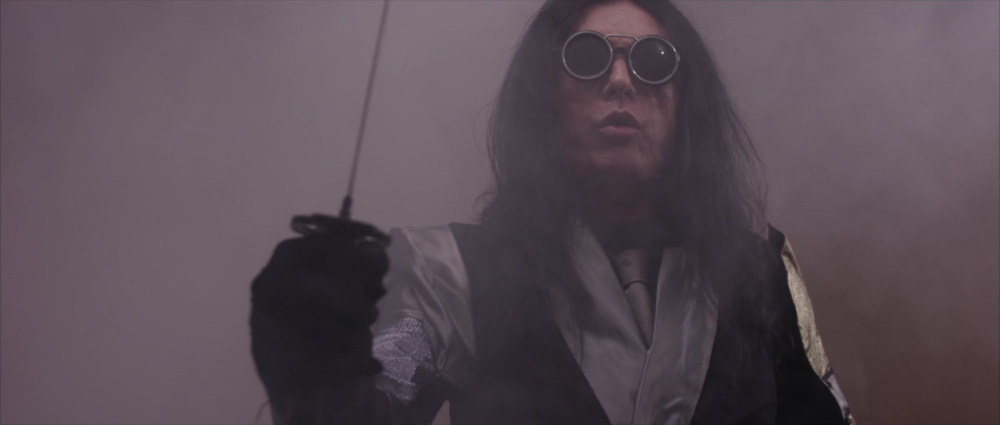Short summary:
The movie “The Disaster Artist” is the dramatization of the audiobook of the making of a “disaster” of a movie, “The Room”.
This movie gives you a look at how the “disaster” was made and brings the audiobook to life in a masterful adaptation. Enough of the backstory of the film and the friendship were shown without slowing down the pacing or bloating the runtime.
Review:
As a fan of “The Room” and the audiobook and a lover of documentaries and “making of” features, I would be remiss in my duty if I did not include a review of The Disaster Artist.
I don’t normally go to the theatre. I’m rather spoiled by the convenience of being able to hit pause and use closed captioning. Plus, my husband has the habit of stopping so frequently we might has well add commercial breaks to watch a Blu-ray. (I’ve made peace with this quirk as accepting it as part of his charm.) Occasionally, a movie comes around that sparks such a desire for instant gratification that it outweighs these creature comforts. The Disaster Artists was one such movie.
Unraveling the mystery of Tommy Wiseau (Alien? Or Vampire?) is irresistible, yet unnecessary. You can find details of his life, speculate about his motivations, but whatever you piece together, it will be an incomplete picture.
Despite the fact that he is foreign (from the faraway land of New Orleans…yeah, right), quirks in his mannerisms and behaviors can be attributed to cultural differences. I won’t pretend to be a doctor, but I believe part of the mystery is that he is also “neuroatypical”. It is a newer term which is not yet medically defined, but rather an umbrella term which includes the autism spectrum, ADHD, social anxieties, and general difficulties in relating to “neurotypical” people.
To sum it up, Tommy is a strange stranger in a strange land.
Despite the obstacles, he has evidently done quite well for himself.
Though he has achieved monetary success, it would seem that success in other matters continues to elude him.
He could have had instant success as a villain but wanted to be seen as a regular American guy, casting himself as “Johnny” who wanted a regular, stable married life, working at a bank. “How do you define success?” is also a rather common interview question. The idea is that how a person defines success reveals something about their character, their goals, their identity. Instead of Johnny being a Rockstar or a millionaire, Tommy cast himself in a role of a banker in search of recognition and a raise. This seems like an odd fit. Tommy does NOT look like a regular guy who works at the bank.

Tommy Wiseau vs the Bank Manager. The only thing these guys have in common is their tie color.
It would be far easier to cast him as the guy who says “No, Mr. Bond. I expect you to die!” rather than “Would you like this back in tens or twenties?” or “Let’s get a look at those W2s and get you qualified for a mortgage!” He’s had a few parts since The Room in which he plays the type of role he tried to escape. His part in Samurai Cop 2, though perfect for him, was the type of casting he had previously turned down. So becoming an average American guy can’t be crossed off his list.

Tommy Wiseau in Samurai Cop 2 (basically typecasting)
In The Disaster Artist, June Diane Raphael’s character mused that there really was a “Lisa” who broke Tommy’s heart. With all of the traveling he does with showings of The Room, you’d think there would be some pictures or news of a constant companion.
Most people would be happy for this type of success—The Disaster Artist began with famous fans of the room telling how they first encountered the film, and what a success the film is. All of these years later, and The Room’s popularity only grows. The peculiarity of the film and its star, the inane dialogue, abandoned plot points, leaves the audience not knowing whether to laugh or cry.
The Disaster Artist captured the dismay Tommy felt at the fact that the reception of the film didn’t match up to the way he wanted to be perceived. The dramatic moments offered to audiences to feel his pain instead brought peals of laughter.
The real scene didn’t play out exactly like this in the audiobook, and that is this movie’s strength. The friendship between Tommy and Greg hit a few rough patches, and having the whole story in the audiobook was interesting. The choices made in adapting this tale to a screenplay gave the audience enough info to go on, and kept the pacing tight.
The film succeeded in telling the essential parts of the story, offering some hint of that makes the enigma of Tommy tick, yet leave you wanting more.
Since I saw the movie and listened to the audiobook first, I feel it’s the best way to experience this film—having already seen and heard the source material. But I feel this movie was good enough—telling a story based on the source material, but not relying on in in such a way that you couldn’t enjoy it as a film in which you have not entered The Room. After watching The Room, going back to see this a second time will make it even funnier.




